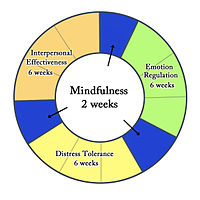
Photo from wikipedia
Objectives The risk of opioid addiction among people with chronic pain is elevated in those using opioids to self-medicate physical or emotional pain or distress. The purpose of this study… Click to show full abstract
Objectives The risk of opioid addiction among people with chronic pain is elevated in those using opioids to self-medicate physical or emotional pain or distress. The purpose of this study is to test the main effect of distress tolerance (DT) on opioid use disorder (OUD) status in people with chronic pain, and the potential moderating effect of DT in the relationship between known addiction risk factors and the development of OUD. Methods One hundred twenty people with chronic pain were recruited to 1 of 3 groups according to their opioid use status (ie, current methadone or buprenorphine/naloxone for OUD [n = 60], history of OUD but current prolonged opioid abstinence [n = 30, meanabstinence = 121 weeks, SD = 23.3], and opioid naive [n = 30]). Participants completed self-report measures and a cold pressor task. Multinomial logistic regression analyses were used to test if DT associated with OUD status in people with chronic pain and to compare DT to other known indicators of OUD risk. Multinomial linear regression analyses were used to test the moderation effects of DT on the relationship between various risk factors and OUD in people with chronic pain. Results Analyses revealed that DT was significantly related to OUD status but did not moderate the effects of most OUD risk factors. Conclusions These results suggest that decreasing distress (eg, pain levels, craving responses, etc) may be more effective than improving tolerance to distress for the comorbid chronic pain and OUD population.
Journal Title: Journal of Addiction Medicine
Year Published: 2022
Link to full text (if available)
Share on Social Media: Sign Up to like & get
recommendations!